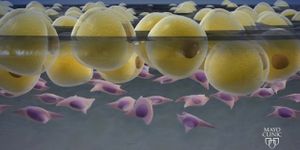Seagrasses grow in many parts of the world in salty waters. They are not a type of seaweed but flowering plants; there are four groups including 72 species, and they can grow in packed meadows, some of which get quite massive and can support an entire ecosystem. New work has shown how beneficial they are; they can remove a lot of pathogenic bacteria from water.
Researchers investigated the waters surrounding islands in Indonesia, and they detected very high levels of the Enterococcus bacteria, often found in human intestines. However, where seagrass meadows covered the ocean floor, the levels of bacteria were three times lower. When surveying the entire bacterial composition of the water, harmful microbe levels were cut in half around the seagrass meadows. Coral diseases were also reduced significantly.
The mechanisms underlying this phenomenon are not yet understood, but researchers have suggested it may have to do with how the seagrass keeps sediment that is rich in nutrients tethered to the local environment, instead of floating around where pathogens can benefit from it.








